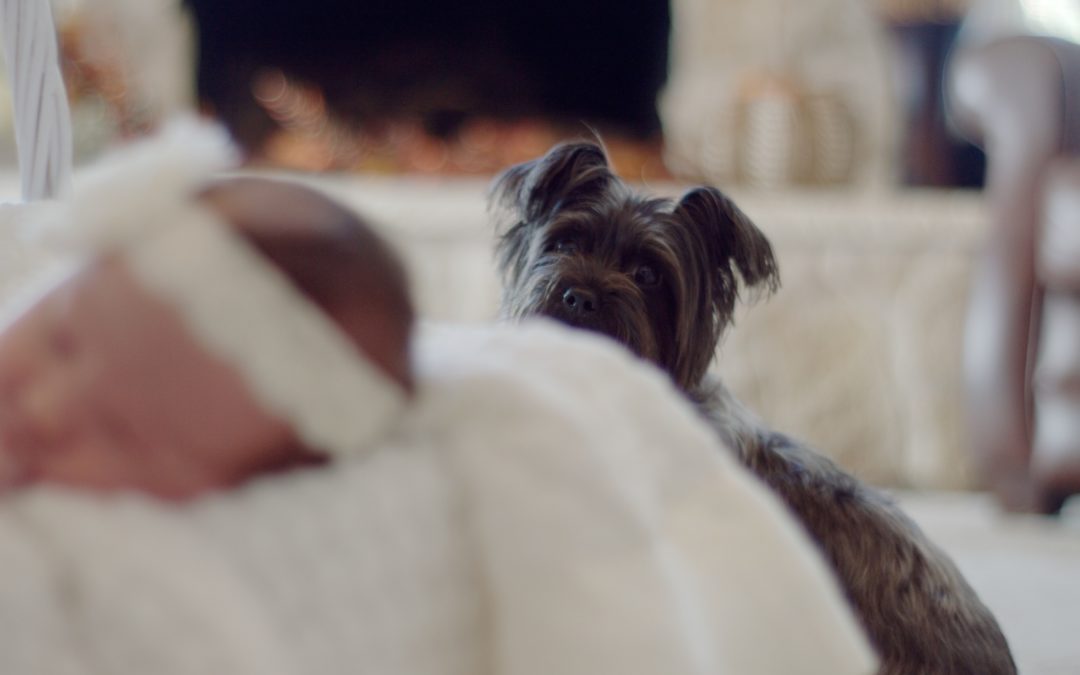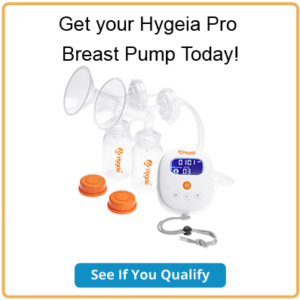Dogs can be loyal companions and family protectors, and many dogs are considered members of the family. As such, it is essential to know how to prepare your dog for a newborn, so that they don’t become too difficult to manage or cause any harm during this time of great change. Introducing your furry friend to your new baby properly can help them accept your newborn as a lasting member of the family, and as an individual to care for and protect.
Can Dogs Sense Pregnancy?
A dog’s fantastic sense of smell can detect changes in a pregnant woman’s hormonal patterns during pregnancy. Because of this, a dog may be able to understand that a woman is pregnant even before the woman does. Dr. Ann Hohenhaus, a staff doctor at the New York City Animal Medical Center, states: “I suspect that dogs can smell something we cannot in a pregnant woman.”
Your dog’s ability to detect changes brought on by pregnancy extends well beyond its nose. Dogs can detect subtle changes in movement, mood, physical changes (your growing belly), and behavior. You can take steps to prepare your dog for the most significant change, helping them to learn to behave correctly, and not feel left out, when your baby finally arrives.
Preparing a Dog For Your Baby
You can start preparing your dog for a new family member well before your baby arrives. In essence, you’ll have nine months to slowly introduce your pup to the changes that will be affecting them, and to get them used to these upcoming differences. Consider some of the approaches below to prepare your dog for a baby around the house.
Start as Soon as You Know You Are Pregnant
Training and retraining should begin immediately after confirming you are pregnant. You can start by tackling any aggressive tendencies or fear-based issues your dog might display. For instance, dogs may aggressively guard their food bowl, resting space, or toys. This could be hazardous for babies and young children who don’t understand to leave these things alone, or who may be oblivious to the warning signs that dogs normally give off.
There are numerous treatment exercise options for food guarding and relaxing a dog around its bed or toys. Try some desensitization or counterconditioning techniques so that your dog won’t have such strong reactions to people, especially babies, being near these things.
You should also pay attention to how your dog acts around strangers and infants. Get them used to waiting to greet strangers, while not jumping up on them. Dogs can become excited and want to jump up on people, which could inadvertently harm your baby. It is also a good idea to determine your dog’s sensitive areas.
Common sensitive areas for dogs are the ears, mouth, paws, and tail. It is a strong possibility that a baby may pull on your dog’s ear, which may provoke an unwanted reaction from your dog. Help your dog become more comfortable with these areas being grabbed and played with by handling them by the collar and touching and/or petting their mouth and ears while giving them treats. This way, they associate these areas being handled with something positive, and won’t act aggressive or fearful when these areas are grabbed.
It is always wise to speak with your veterinarian when for the best approach to these techniques, and you may even want to consider training classes for you and your dog.
Establish New Boundaries in the House
New parents should already have taken on the task of baby proofing the house. Safety latches, baby gates, and corner and edge bumpers are all must-haves for expecting parents. You can even buy extra baby gates to keep your dog out of areas that will be used solely for and by your newborn.
Get your dog used to off-limit areas by setting up the gates before your baby arrives. This will give your pup a chance to map out the new layout of your home. You can also set up a safe space for your dog to retreat to and relax. Pro tip: get a diaper disposal container with a secure cover, because dogs may be tempted to go through dirty diapers!
Pretend You Have a Baby
Just like you may have done in middle school health class, you can simulate having a baby around your dog to see how they react, and to help correct unwanted behavior. Instead of a bag of flour, try buying a doll and wrap it in a blanket. Have your dog watch you change, bath, and feed the doll. During this time, you can retrain your dog about boundaries and being too close to the baby, staying out of certain rooms, and aggressiveness over your baby’s toys.
Additionally, you can start setting physical boundaries and conditioning your dog to leave you in peace when you are nursing and pumping. You can even buy or obtain a breast pump at no cost with qualifying insurance before having your baby, and use it to train your dog. To do so, train them to lay down and stay on their bed when they hear the noise of the breast pump, and reward them for doing so with a treat after pumping, allowing you your privacy. Associating something positive (treats) with the sound of the breast pump can help you set boundaries more easily, ensuring that you won’t be interrupted in your safe and quiet space when nursing or pumping.
How To Introduce Dog To Baby
You’ve made all the preparations, now comes the time for your dog to actually meet your baby. When bringing your baby home from the hospital, there are several things you must keep in mind.
Consider a Pet Sitter
Your dog won’t exactly be the first thing on your mind while going through labor, so you should think about setting up a pet sitter to watch over your dog while you’re in labor. They can take care of your dog in the first hours and days after delivery as well, so you can get adequately adjusted to living the baby life. A dog sitter can be a neighbor, friend, or family member. There are even apps available to hire a dog sitter, such as Rover and Wag, if a family member or friend isn’t up to the task.
Don’t Ignore the Dog
It may be easy to place your dog on the backburner with a newborn baby in the house, but this doesn’t mean you should ignore them. Dogs are social creatures, and with so many changes happening and a new family member present, they’ll have curiosities. You can include them into the fold by positively responding to their interests with enthusiasm, while keeping the boundaries you have set previously and keeping your baby a safe distance away for the time being.
Stay Positive
You want your dog to associate its first interactions with and around your baby with positivity. A negative vocabulary such as “no” and threats can teach your dog to connect the arrival of the baby with negativity. Instead, try positive reinforcement. Give them treats when they adhere to the new rules you have set. To get their mind off of the new baby, try offering them toys that stimulate them mentally. Your preemptive training will come in handy here, as your dog won’t have to learn these behaviors all at once, and you can positively reinforce when they do listen and are changing their actions.
Be Realistic
If it comes down to it, the safety of your baby takes precedence over the dog. If you come to the regrettable conclusion that your dog cannot or will not change its behavior, it is best to make arrangements to find your pet a new home. This may be an incredibly tough choice, and you will have to be honest with yourself and think critically about whether you and your dog can make it work, or whether the presence of the dog represents a risk to your newborn.
New moms already have a great deal to worry about, and wondering how your dog will react to the new baby shouldn’t be one of them. With the proper training, you can prepare your dog for a welcoming introduction to your new child safely. It may take hard work — on top of the hard work it takes preparing for the baby itself — but, your canine can become a loving and caring companion to its new family member.


